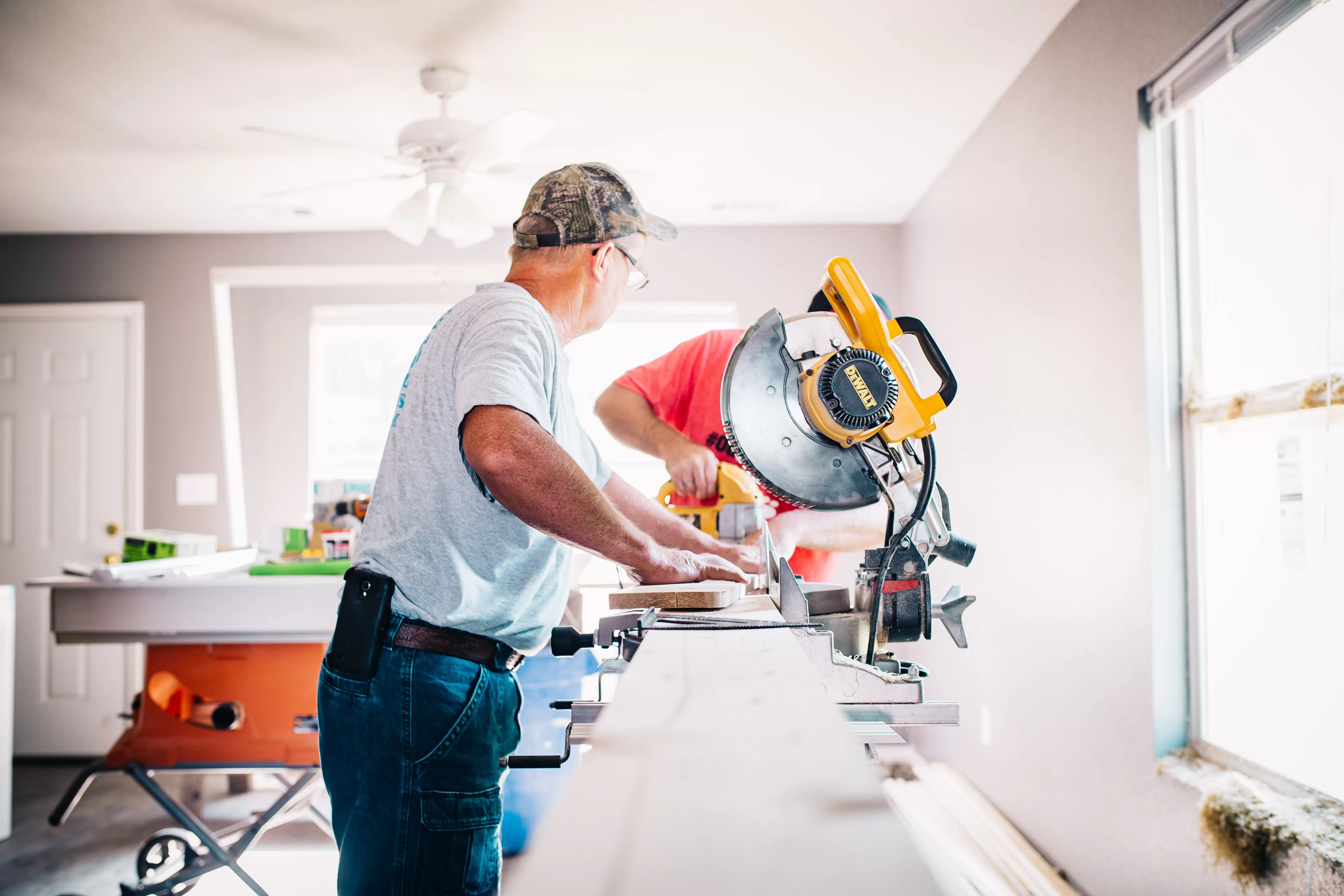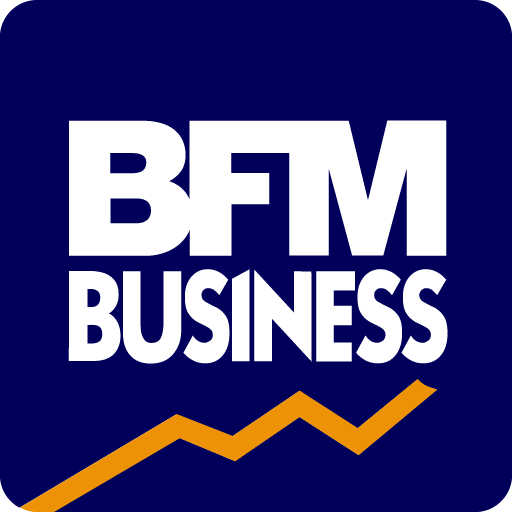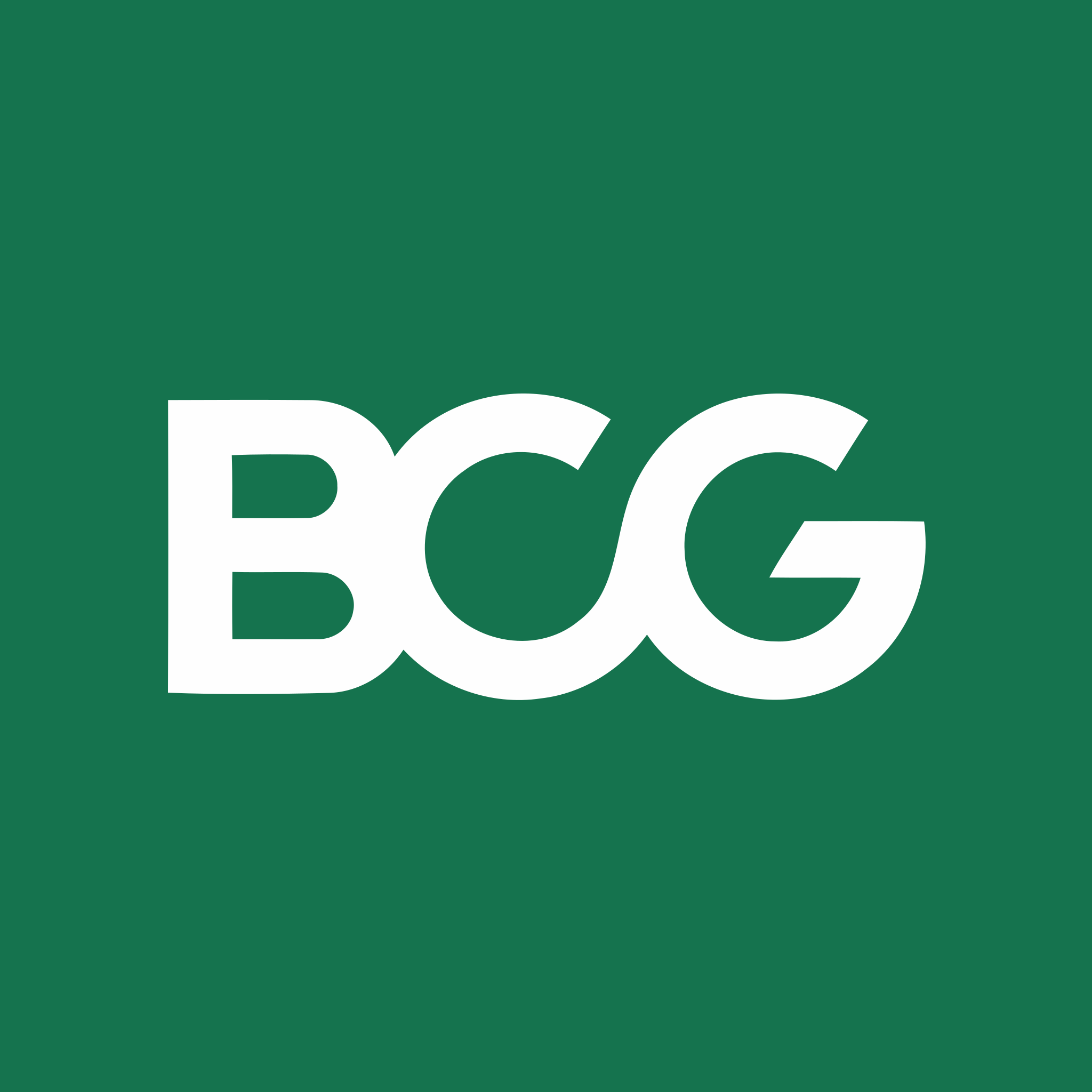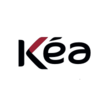Detailed content of our market study
 Inforamtion
Inforamtion
- Number of pages : 35 pages
- Format : Digital and PDF versions
- Last update :
 Summary and extracts
Summary and extracts
1 Market Overview
1.1 Definition and presentation
The term do-it-yourself refers to nonprofessional manual activities, the repair, creation, improvement, and maintenance of small items in the home. This study focuses on the DIY market and therefore excludes the BtoB activity of retailers and DIY stores
In 2019, global DIY and home improvement market sales reached 618 billion euros, an increase of 4.22 percent from the previous year (593 billion euros).
North America and Europe together account for about 86.6 percent of this market, although their combined population accounts for only 16 percent of the world's population.
Italy, which boasts sales equal to 7 percent of Europe's. National per capita spending is around 250 euros, slightly below the European average (270 euros) but significantly higher than the world average of 76 euros.
In 2019, the market continued to grow steadily, but showed a softening compared to the trend of the previous two years. The positive contribution to the sector's performance can be attributed to the brisk recovery in demand for home and garden tools and utensils, driven by the practice of "do-it-yourself," the growing interest in home care and beautification, and the spread of "green" trends, which offset the reduction in purchases of home maintenance products.
An important contribution to the recovery in demand came from the development of the online channel, which intercepted new customer segments through a wide range of products at affordable prices, and from the renewal of specialized distribution, through the upgrading of outlets and the offering of services, from spaces dedicated to decorations to home personalization services.
Covid has had a very positive impact on this market: after the months of March and April,characterized by uncertainty, the market exploded in May, and in the following months, orders to suppliers suddenly grew and continued. Sales grew by 20 percent in some sectors, such as home and garden maintenance.
It is estimated that the DIY sector will continue to grow at a rate of just under 1 percent, both in value and volume. In terms of spending aggregates, in the year 2018, demand for household tools and utensils confirmed a positive dynamic (around 2 percent in value and slightly less in volume), following the significant progress recorded in 2017 of more than 8 percent, according to revised ISTAT Accounting data.
The main players at the international level are Depot (USA), Lowe's (USA), ADEO (France), Kingfisher (UK), Bunnings Building (Australia), Menards (USA), OBI (Germany), Bauhaus (Germany), Sodimac (Chile), Ace Hardware (USA).
In Italy, however, Bricocenter, Bricofer, Brico Io, Bricoman, Leroy Merlin, Obi, and Ottimax stand out.
1.2 World market
According to the Global Home Improvements Report ****, theglobal DIY market, also known as DIY in Anglo-Saxon languages, was estimated at ***.* billion euros in **** and is growing, slowly but steadily, with a CAGR of *.* percent between **** and ****. In Western countries, there has been a growing interest in DIY in recent years, reinforced by the influence of the Internet and social media, which stimulates sales of DIY products. In addition, the DIY market is very much linked to the concept of home-made home improvements.
World DIY market value World, ****-****, billions of dollars Source: ****
In ****, North America and Europe accounted for ** percent of the market, followed by the Asia-Pacific region, which accounted for ** percent of the market, while Latin America and Africa/Middle East each accounted for * percent. North America and Europe reach ** percent and ** percent, respectively, of the world market, with a total value of €*** billion, an increase of **.** percent from the **** value of €***.* billion.
DIY market by region World, ****, percentage
The geographical concentration of the market is all the more evident as only eight countries account for about ** percent of the market, or ***.* billion euros: the United States, Germany, Canada, Japan, the United Kingdom, France, Australia and Italy. The United States ...
1.3 Italian market
According to analyses conducted by Edra, Ghin and Fedyma, the DIY market in Italy will be worth more than ** billion euros in ****. The following graph shows the evolution of the turnover of companies registered under code **.**, which corresponds to the retail sale of hardware, paint and glass in specialty stores. Thus, this code does not correspond exactly to the field of study, but it allows us to estimate market turnover and obtain an overview of market developments.
Turnover sector of DIY material retailers Italy, ****-****, millions of euros Source:Istat Ateco : **.**
Structurally, the Italian DIY market is experiencing a structural upward trend, with turnover increasing by **.** percent between **** and ****. However, some annual declines in turnover regularly interrupt the upward trend of recent years. From **** to ****, the market grew annually, with the exception of ****, when turnover declined.
consumption of DIY products,
increased steadily
****
consumption
spending
decreased
*.* percent
Percentage change in DIY product consumption Italy, ****-****,Percentage Source: ****
1.4 Impact of Covid
With the pandemic, the Italian people have spent much more time in their homes. The care for the home environment and the desire to make it more cozy and livable has led Italians to invest more money and time in fixing up their homes with DIY jobs, painting, carpentry, and gardening. Though by **** consumers expect to spend more on DIY, stores that have been forced to close for long periods of time are not yet able to reach usual sales levels. Online purchasing of DIY products rose exponentially during **** and ****, with even very high peaks, and this trend has gradually and partially offset store closures.
In the first nine months of ****, Italians spent *.*** billion euros in a brico center, down -*.* percent from the previous year and sales down -*.* percent. It went from a sharp slowdown in March and April, to a strong recovery in the first half of the summer, between May and July, and then realigned with previous years' sales between August and September. A very pronounced ups and downs, which unfortunately did not fully recover the lost sell-out.
In terms of sales breakdown, according to data from GS* Italy's NON FOOD **** Observatory, during the pandemic, the "gardening, ...
2 Demand analysis
2.1 Clientele and spending
Four out of ** Italians claim to be practicing DIY activities, in particular, during the pandemic period, according to research by Task Rabbit, ** percent got into DIY, ** percent tried their hand at furniture assembly for the first time, ** percent at plumbing repairs, ** percent at electrical repairs, and ** percent at wall painting.
In particular, the most passionate DIY enthusiasts turn out to be the very young Generation Z: as many as ** percent of **-** year olds say they have a DIY hobby.
Those who engage in DIY Italy, ****, % Source: ****
In particular, younger people's favorite activities involve routine maintenance inside and outside the home: ** percent have given vent to their "green thumb" by taking care of plants and the garden, ** percent have shown off their skills in assembling furniture, and ** percent have dedicated themselves to repairing faucets and pipes. In addition, the **-** age group of consumers devoted more than the others to major renovation projects: in Italy, about ** percent.
Favorite activities of Generation Z Italy, ****, % Source: ****
Moving more broadly, the favorite activities of those who occupied their time with DIY activities were gardening (***).
Source: ****
Task Rabbit's research shows that, in the near future, people are intent on maintaining their hobbies and continuing with ...
2.2 Habits and reasons for DIY
DIY is chosen by Italians because it contributes to their personal well-being. Do-it-yourself is a clear example of a beneficial and healing activity to practice in one's free time, as it contributes positively to the state of physical and mental health,it also relaxes involves the use of the hands, thus becoming a therapeutic form because, by bringing all our senses into play, we feel more involved on an emotional and personal level. In addition, the desire to detach the mind from daily problems was the main motivation for women to start new DIY jobs.
The benefits experienced by Italians are as follows:
Stress reduction Improved self-esteem Keeping fit Improved mental health Improved bone and muscle structure
Source: ****
as for the sources from which Italians found inspiration and information for their crafts, they were mainly online. In particular, ** percent of Italians who have a DIY hobby relied on videos posted by Diy experts. In contrast, **% chose to follow the advice of the store that sells the products they need for their crafts. ** percent listened to friends and relatives, while ** percentconsulted blogs, industry sites and specialized pages on social networks[***].
Where Italians find information about DIY Italy, ****, percent Source: ****
2.3 New DIY trends
Two new trends are emerging in the world of do-it-yourself, the first being the ever-present search for sustainable products, and the second being the possibility of turning one's passion into a small business, through platforms that connect enthusiasts in the field.
3 Market structure
3.1 Small and large distributor market
The main sales channels for do-it-yourself, in Italy, are specialty stores, i.e., plumbing, construction, hardware, carpentry, garden centers, Grandi Distributori Specializzati (***), i.e., large food hypermarkets.
According to data from the NON FOOD Observatory **** dI GS* Italy, in the year ****, specialty stores remain the main sales channelfor the DIY sector, despite a slight decrease in market share to **.* percent (***). GSAs, on the other hand, continue to lose market share, standing at *.* percent[***].
Source: ****
3.2 Large specialized distributors
Although small retailers, such as hardware stores, are a reality in Italy, an important part of the sector, especially in terms of turnover, is that of the chains of specialized product distributors (***) in DIY and do-it-yourself, construction, gardening, decorating and bathroom furniture.
The number of GDS, large specialty retailers, is increasing by *.**% since ****, reaching *** stores in ****.
Number of GDS stores Italy, ****-****, units Source: ****
The main players in the sector by turnover are Leroy Merlin Italy, Obi Italy, Eurobrico and CSC.
Source: ****
These companies are divided not only by number of stores but also by space occupied. In fact, although for example Leroy Merlin does not have the same amount of stores on the teritorio that other competitors do, it is the retailer with the largest stores in Italy.
Large retailers by number of stores Italy, ****, units Source: ****
It should be noted that this classification also includes franchise stores.
Although Leroy Merlin occupies only the seventh position in terms of number of stores, it ranks first in terms of the area occupied by its stores, which become real department stores. In fact, Leroy Merlin is not catalogued under ATECO code **.**, but under code **.**, which combines the category "Department Stores" under ...
3.3 Retailers
As mentioned above, the do-it-yourself market is difficult to quantify, however, it is possible to use ATECO code **.** to see the trends in theretail trade of hardware, paint, flat glass, and building materials in specialized establishments .
The volume of production is slowly but steadily growing, with the only exceptions between **** and ****, when it decreased by ** percent, and ****, which decreased by *.* percent from the previous year.
Do-it-yourself sector production value Italy, ****-****, billion euros Source:ISTAT ATECO**.**
The number of businesses has remained fairly constant over time, with roughly ** thousand companies active in the sector.
Firms active in the do-it-yourself sector Italy, ****-****, units Source:ISTAT ATECO**.**
Employment in the sector has been steadily increasing; in particular, between **** and **** it increased by ** percent.
Employment in the do-it-yourself sector Italy, ****-****, units Source:ISTAT ATECO**.**
4 Supply analysis
4.1 Products offered
The DIY market encompasses a wide variety of products, mainly because their use does not always correspond strictly to DIY. Gardening products, for example, do not strictly fall under the DIY umbrella, but are sold by most DIY stores. However, products in the DIY market can still be categorized as follows.
Patio and garden : outdoor cabinets, garages, storage, gates, fences, outdoor area, fountains, swimming pools, outdoor lighting, lawn mower, chainsaw, hedge trimmer, cleaner, lawn, greenhouses, irrigation, pumps, gardening tools, garden furniture, umbrellas, pool and spa accessories, barbecue, plancha, outdoor kitchen, swings, trampolines, slides. Bathroom : furniture, storage, faucet, sink, shower, bathtub, toilet. Kitchen : furniture, countertop, sinks, faucets, appliances, baskets, stools, lighting, VMC, tiles, Materials and carpentry : insulation, partitions, ceiling, window, door, stairs, paneling, lath, lathing, paneling, parquet, floor, stairs, scaffolding, frame, tile, parquet, resilient flooring Decoration and lighting : interior and exterior lighting, light bulbs and LEDs, wallpaper, slabs, rosettes, curtains, stained glass windows Painting and maintenance : interior and exterior paint, roller, brush, coating, maintenance product, glue Electricity : electrical switch and outlet, electrical panel, extension cord, lighting structures and supports Heating and plumbing : radiator, boiler, stove, chimney, VMC, fan, air conditioner, water treatment, water supply system, sewage disposal, toilet equipment and accessories. Material ...
4.2 Prices
Prices in the DIY industry in Italy vary greatly from one category or product range to another, as well as depending on the store and product brand.
For example, in the tool category of BricoCenter, we can find the following prices:
Pneumatic nailer: about ** euros. Gas drill: about *** euros. Toolbox ** pieces: about ** euros. Set of ** screwdrivers: about ** euros. Abrasive sheet: about * euro Screwdriver drill: about ** euros. Demolisher: about ** euros. Cutter: about ** euros. Squeegee: about * euros. Angle grinder: about *** euros. Gas cylinder: about ** euros. Stylus welder: about ** euros. Battery tool: about ** euros. Impact hammer: about *** euros. Circular saw bench: about *** euros.
House and garden tools and equipment prices Italy, ****-****,Consumer price index for the whole community (***) - annual averages COICOP *** household and garden tools and equipment Source: ****
4.3 Supply trend
Digitizing the offering
As mentioned above, DIY stores have realized the importance of digitizing their offerings. This is reflected not only in the development of the range of products offered on the Internet, but also in the diversification of digital services offered.
Combining personalization and digitization of its offer, Brico Io has launched a new digital loyalty program. Instead of the smeplice system of loyalty points to obtain a discount, a more personalized program has been introduced. Points are converted into discounts and customers can enjoy exclusive benefits such as personalized offers and information online, as well as being able to convert their points to other stores, such as COOP grocery stores[***].
Help and incentives for DIY
Many consumers are hampered by their lack of skills, which discourages them from undertaking DIY projects or causes them to give up along the way. In response to this problem, industry players are innovating to help them carry out their projects. This is done either by teaching potential consumers how to DIY or by giving them the means to carry out their projects, in both cases encouraging them to purchase the necessary materials in their stores. Many stores offer, for example, the possibility of ...
5 Regulations
5.1 Regulations
Rules of good neighborliness
There are no real eisit rules to be able to practice the hobby of DIY. If, however, practiced at home, people must follow the rules of their apartment building and the regulations of the neighborhood laws. They are guidelines in order to be able to maintain good coexistence relations between neighbors. Some do-it-yourself hobbies can create unwanted noise, dust, and odors for neighbors, so the following must be respected:
night rest is regulated by law from ** pm to * am or * am. During this period, it is not possible to make noise either inside or outside. no noisy activities, such as mowing the lawn, cannot be carried out on weekdays from ** noon to * p.m. and * p.m. to * a.m., Saturdays from ** noon to * p.m. and * p.m. onwards, Sundays and holidays. The immissions of smoke or heat, exhalations, noises, shaking and similar propagations arising from the neighbor's fund may not be prevented, unless they exceed normal tolerability, also having regard to the condition of the premises. The criterion of normal tolerability is by its nature relative.
Rules for stores
In order to open a store, one must follow the guidelines of Legislative Decree No. *** of ...
6 Positioning of actors
6.1 Segmentation
- EuroBrico Spa
- MEB srl
- OBI Italia
- Leroy Merlin Italia
- Borea Spa
All our studies are available online in PDF format
Take a look at an example of our research on another market!
 Choosing this study means :
Choosing this study means :
Access to more than 35 hours of work
Our studies are the result of over 35 hours of research and analysis. Using our studies allows you to devote more time and added value to your projects.
Benefit from 6 years' experience and over 1,500 industry reports already produced
Our expertise enables us to produce comprehensive studies in all sectors, including niche and emerging markets.
Our know-how and methodology enable us to produce reports that offer unique value for money.
Access to several thousand articles and paid-for data
Businesscoot has access to all the paid economic press as well as exclusive databases to carry out its market research (over 30,000 articles and private sources).
To enhance our research, our analysts also use web indicators (semrush, trends, etc.) to identify market trends and company strategies. (Consult our paying sources)
Guaranteed support after your purchase
A team dedicated to after-sales service, to guarantee you a high level of satisfaction. +44 238 097 0676
A digital format designed for our users
Not only do you have access to a PDF, but also to a digital version designed for our customers. This version gives you access to sources, data in Excel format and graphics. The content of the study can therefore be easily retrieved and adapted for your specific needs.
 Our offers :
Our offers :
the DIY market | Italy
- What are the figures on the size and growth of the market?
- What is driving the growth of the market and its evolution?
- What is the positioning of companies in the value chain?
- Data from several dozen databases
5 reports pack (-15%) IT Italy
- 5 reports at €75.6 excluding VAT per study to choose from our Italian catalogue for 12 months
- Save 15% on additional studies purchased
- Choose to be refunded any unused credit at the end of the 12-month period (duration of the pack)
See the terms and conditions of the pack and the refund of unused credit.















